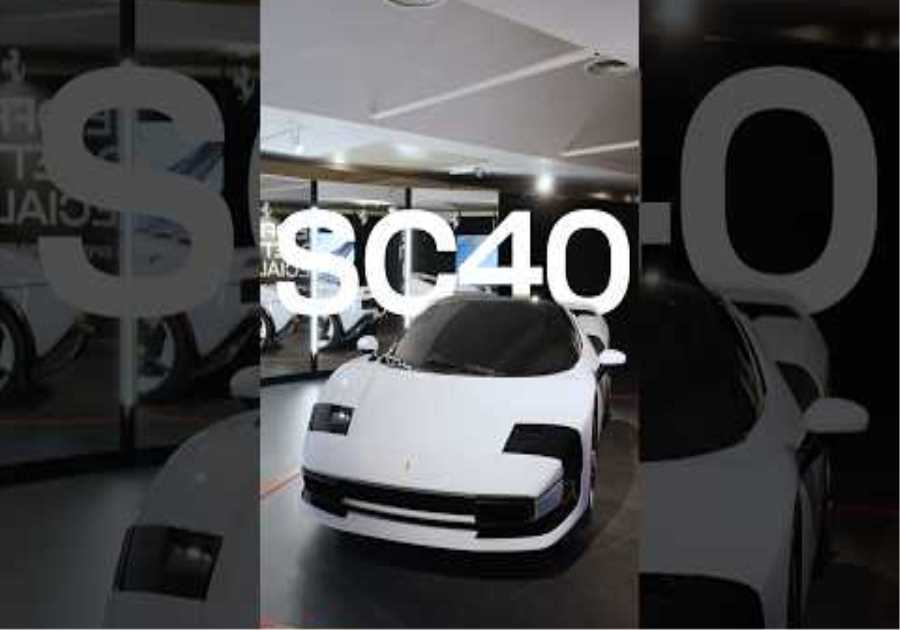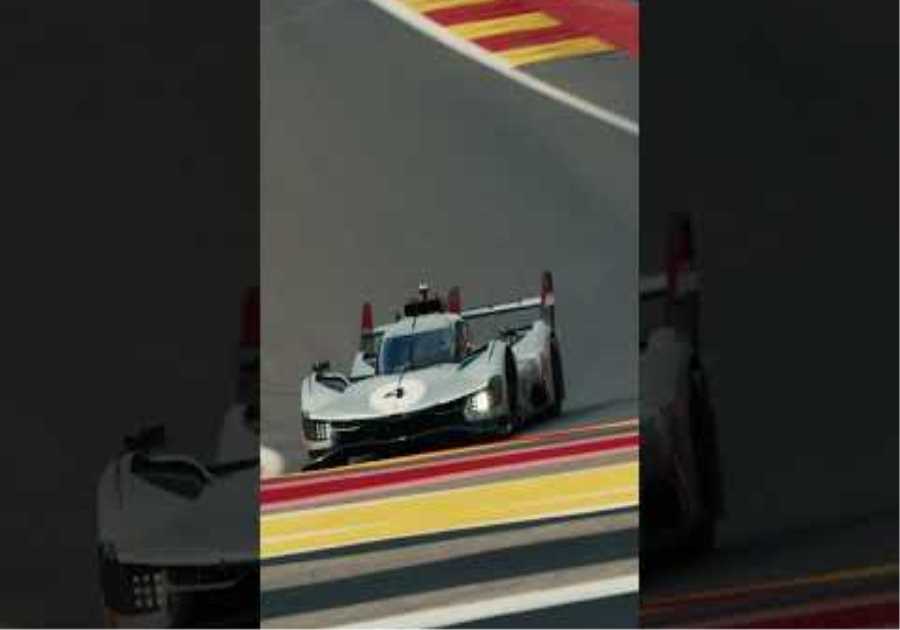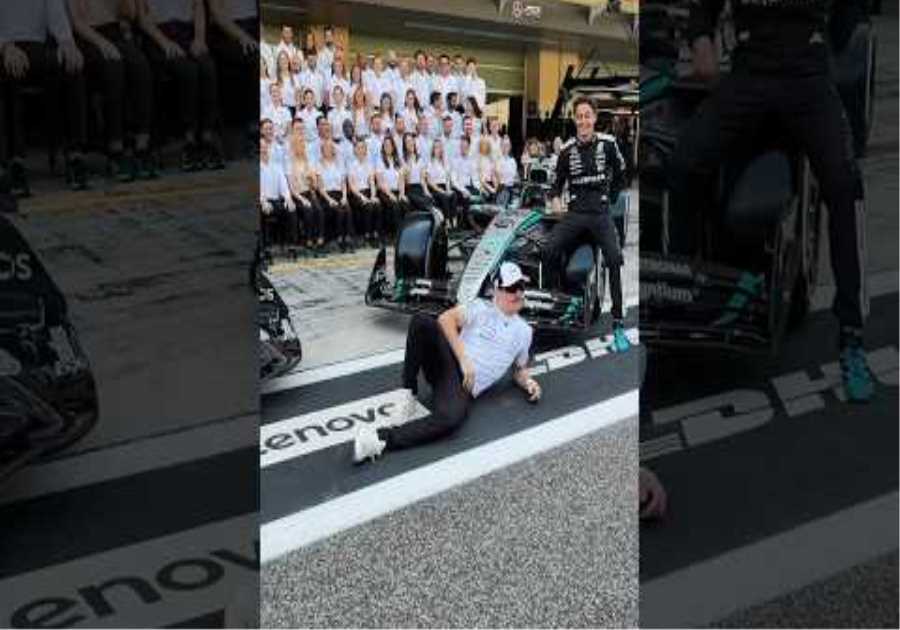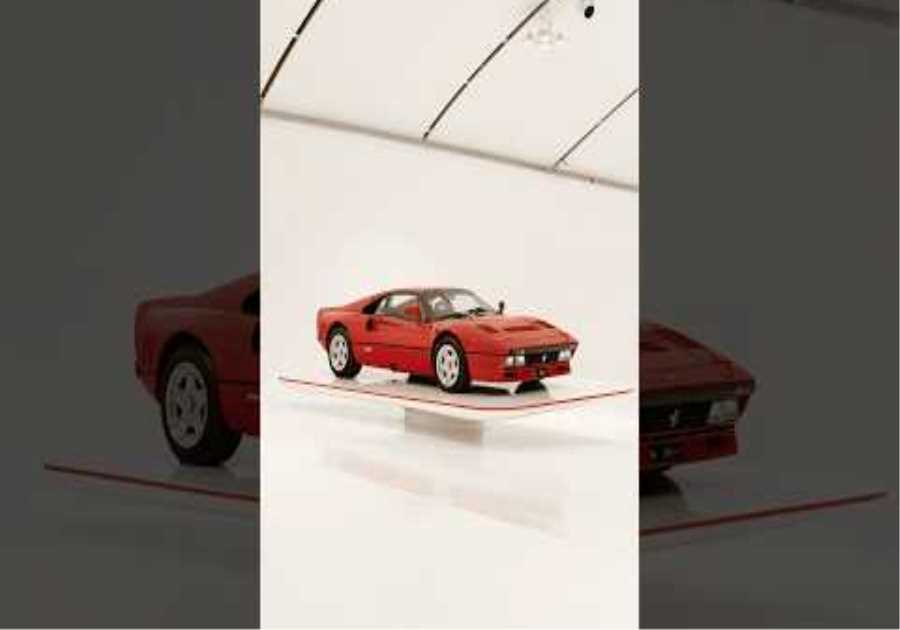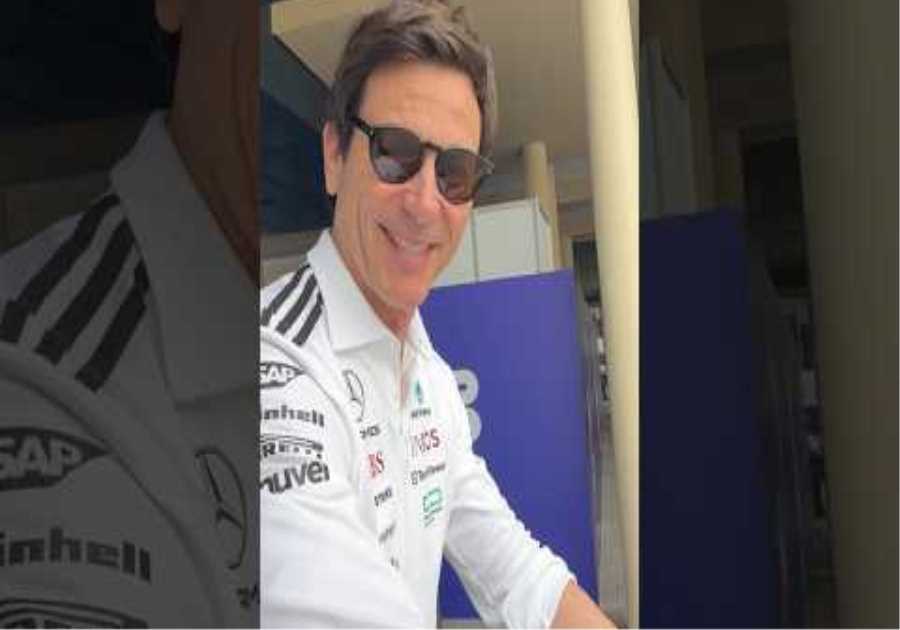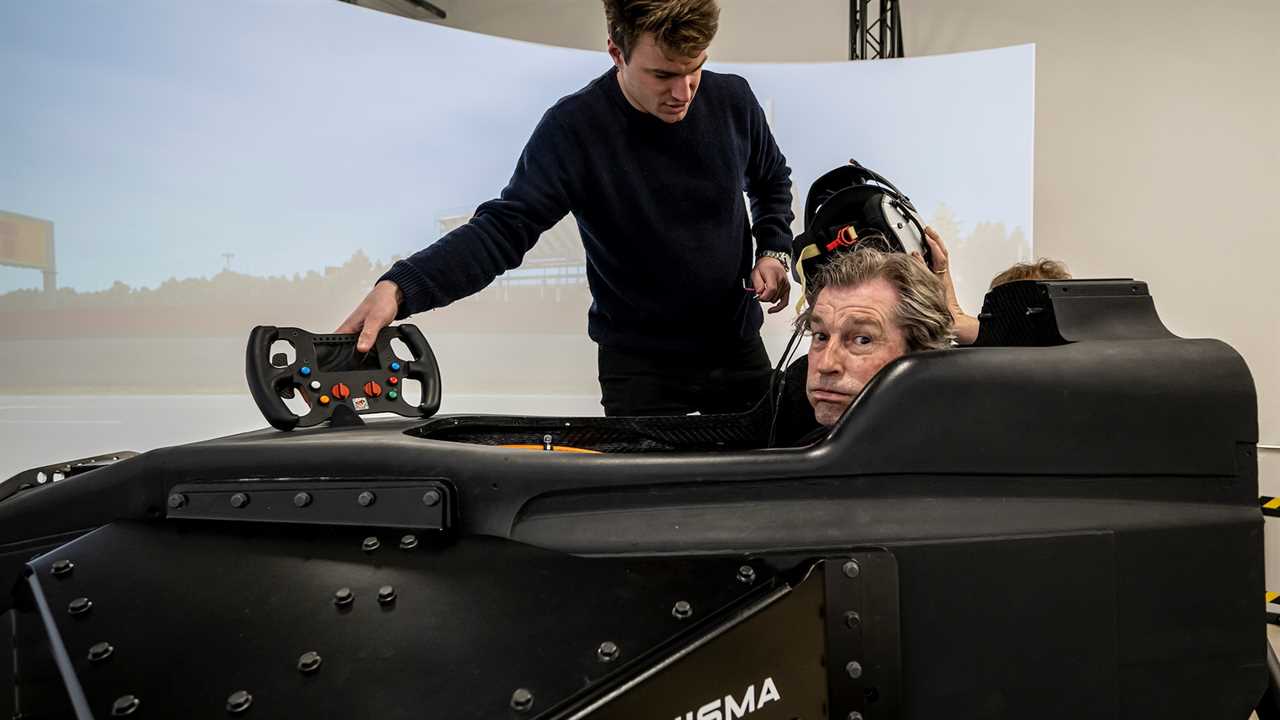
I’m cinched tightly into a narrow carbon-fiber tub, looking down the racetrack at the braking markers for a tight right-hand turn. There is a loud, urgent, omnipresent buzz in my ears: the 1.5-liter single-turbo V-6 hybrid, idling at 5,000 rpm. Pirelli slicks tower just beyond my knuckles as I clench the butterfly-style steering wheel.
“Check the radio.” A voice crackles through the speakers in my helmet. “I hear you,” I confirm.
“Right, you’re good to go. It’s best to feather the throttle a bit in the first four gears. Otherwise, all you get is wheelspin.”
Deep breath. Tug at the shift paddle. First gear. Off the brake and tentatively squeeze the accelerator. The revs zing. A twitch of the tail. Second, third, fourth, fifth. The steering wheel’s shift lights strobe as I snap off the gears as quickly as I can count them, the powertrain urgent, insistent, demanding more, more, more.
It might be old and out of date, but a 2019-spec Formula 1 car is still a seriously fast piece of machinery. I know because I’m driving one. Not a real one, of course; I’m driving it on a simulator. And not just any simulator. The Dynisma DMG-1 is so good, the Ferrari F1 team uses a version of it to honor the dynamic performance of the F1-75 grand prix cars driven by Charles Leclerc and Carlos Sainz Jr. in this year’s F1 World Championship.
Dynisma was founded in 2017 by Ash Warne (below left), who previously led simulator development efforts for both the Ferrari and McLaren F1 operations. His leadership team includes Nik Garrett and James Golding—both of whom also worked on simulator development for the Ferrari F1 squad—and mechanical engineer Matt Bell, who led jet-engine development teams at Rolls-Royce.
See all 14 photos
Simulators are nothing new in F1, especially in recent years as teams have been restricted to a mere handful of days of on-track test sessions. What makes the DMG-1 different? In simple terms, speed. “Our simulator has a latency of between 3 and 5 milliseconds,” Warne says, “whereas our competitors have a latency of anywhere from 15 to 50 milliseconds.”
Latency is the delay between a simulator system registering an input—either from digitized externals like road surface, tires, or suspension, or from the driver in the form of steering, braking, and acceleration—and then generating a relevant and accurate motion output for the driver to experience. It is the bugbear of all driving simulation systems, whether you work for an F1 team or you’re sitting at home trying to tame the Nürburgring Nordschleife on Gran Turismo 7.
Dynasma’s ultra-fast motion generators mean its simulators can accurately replicate real-world F1 car dynamics. “From asking our motion platform to cue oversteer and it being felt, [the time delay] is imperceptible,” Warne says.
This matters because missing the clipping point for the Nordschleife’s scary-fast Schwedenkreuz might cost you a ribbing from your buddies as your digitally rendered Porsche 911 GT3 ricochets off the barriers, but in F1 the consequences of a mistake are more meaningful.
“If you have a latency of 50 milliseconds or more, that’s potentially increasing the reaction time of the driver by 50 percent, which in the context of an elite athlete is ludicrous,” Warne says. “There’s no other driver or athlete training where you would tolerate forcing their performance to be 50 percent worse in the training tool.”
In addition to greater speed, Dynisma’s simulators have greater bandwidth, up to 100 Hz or more across all axes, which is five times better than any other system. This means the DMG-1 can put vibrations and movements through its platform that contain more information than other simulators. “When you drive it, you easily see why that’s relevant,” Warne says. “Every time you go over a curb or a rumble strip, you feel the vibrations.”
See all 14 photos
The F1 car I’m driving is a digital avatar of a generic 2019-spec machine—F1 teams are naturally very protective of their vehicle data—and its limits are way beyond anything I can even begin to approach. That is, beyond deliberately initiating some understeer in low-speed, second-gear corners and feeling the tail twitch if I get too ambitious with the throttle exiting a slow corner.
Even so, there’s one aspect that can’t be replicated. Former Red Bull Racing F1 driver Mark Webber described braking for the chicane at the end of Montreal’s Circuit Gilles Villeneuve as “a mini car crash.” He’d mash the brake pedal there, applying 275 pounds of force through his left leg and foot for just a fraction more than 2 seconds, slowing the car from 210 mph to 80 in just 400 feet. The rate of deceleration? About 5g. That really is like driving your car into a wall at 10 mph, lap after lap.
No simulator can replicate the g-loads—sustained or otherwise—you get from an F1 car. But the Dynisma simulator can make its driver feel how the real-world car it’s set up to replicate will respond to any given input. Action, reaction. In almost real time.
I get a better sense of this when I drive what Warne describes as a generic mid-engine GT3 race car on tires with grip levels roughly halfway between a performance road tire and a racing slick. Driving the digital F1 car was largely an exercise in attempting to position the front tires somewhere in the vicinity of the apexes as they rushed toward me. At no point did I get near the event horizon at the limits of aero and mechanical grip.
By contrast, clumsy braking in the GT3 avatar—I find it difficult to accurately modulate my brake inputs without the correlating factors of g-loads on my body and in my inner ear—results in what feels exactly like rear-wheel lockup, my butt sensing the tail instantly snapping left or right, depending on corner direction and track camber.
Through fast corners I can feel the tires nibbling at the edge of adhesion and can sense where the rear end will let go if I’m not careful with the throttle to keep the chassis balanced. Once, under braking, I clearly feel the left-front wheel lock. The carbon tub bucks and bounces if I take too much high curb through a chicane. Running wide over the sawtooth curbs on corner exit produces a juddering through the steering wheel and the seat of my pants.
See all 14 photos
Apart from absent g forces, it feels real.
The lessons learned from creating the ultimate F1 simulator now offer huge opportunities for automakers looking to shorten product development times and lower development costs, Warne says.
To give me an idea of how a Dynisma simulator set up for road car testing could be used in an automaker’s development process, the racetrack on the screens around me is replaced by a digital replica of a typical special surfaces test area at a proving ground. (Though the projected images look huge in these photos, it all looks to scale from the driver’s seat.) And although the interior projected on the screens looks like a Volkswagen Golf’s, Warne advises me the DMG-1’s carbon-fiber tub is now on avatar for a large rear-drive sedan. He won’t tell me what it is. “What size wheels?” I ask “Eighteen-inch,” he concedes.
I drive at 35 mph over embedded metal strips ranging in height from 0.2 inch to 0.8 inch, over small drop-offs and ledges like those you find on concrete-slab freeways, and over the randomly arranged cobblestones universally known as Belgian pave, just as I’ve done at automaker proving grounds all over the world. There is no road-surface noise or feel between the obstacles, which makes it easy to focus on the noises and motions they induce.
It’s uncanny. I’m hearing and feeling a Mercedes, familiar muted thumps coming from the suspension accompanied by familiar gentle body motions. Afterward, I ventured that it felt like I was driving an E-Class, with 40-series Michelin tires on those notional 18-inch wheels. Warn smiles but annoyingly won’t confirm whether I’m correct.
More important: As electric powertrains and autonomous technologies become more common, subtle differences in ride, handling, and NVH will become more evident to even non-enthusiast consumers, and more critical in communicating brand character.
See all 14 photos
The key issue for automakers: How do you make a Hyundai or a Porsche or a Ford or a Bentley each feel unique to drive if they all have near noiseless electric powertrains with near identical power and torque curves and batteries that weigh the same? And on top of that, if they all have autonomous control systems with a legally mandated set of response mechanisms?
Simulators that provide realistic, real-time responses will allow automakers to bake consumer opinions into their new-vehicle development process. BMW has already built a $110 million facility in Munich with 14 simulators so development engineers can get a broader range of driver feedback. “Ultimately, BMW is selling a car to a huge variety of people out on the street,” Warne says. “So if it can put a lot of people through that simulator center and get different opinions, it can begin to treat that part of vehicle development almost as a statistical exercise.”
Depending on spec, the Dynisma DMG 360X model—which has a platform with a greater range of vertical motions than the racing simulators and which can also spin through 360 degrees—costs between $3 million and $8 million. To put it all in perspective and to help illuminate just how impactful and economical advanced simulators can be within the automotive engineering business, put it this way: In the context of a typical new-vehicle development budget, those dollars are the equivalent of a minor rounding error. Talk about bang for your buck.

